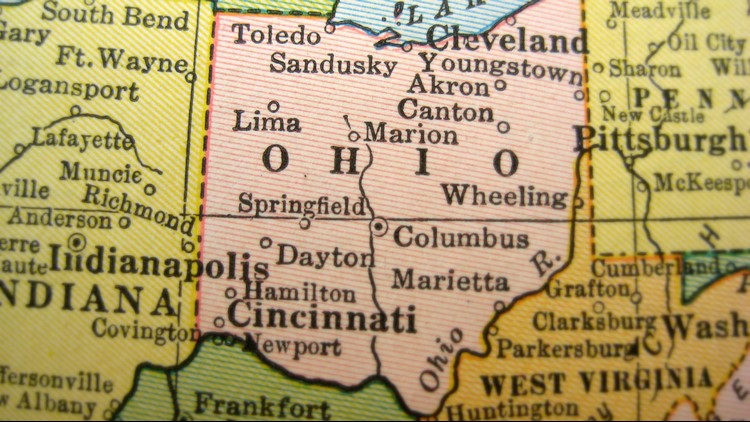COLUMBUS -- Presidential candidates from Donald Trump to Bernie Sanders complained that the political system was rigged against the average voter.
Now, the average voter in Ohio has a chance to make the system a little fairer.
Ohio Issue 1 on the May 8 ballot would change the way lines are drawn for congressional districts – the people we send to Washington D.C. to represent us. Just 15 percent of voters think Congress is doing a good job.
One reason for the low score? People say their member of Congress doesn't represent them. One district, often called the "snake on the lake," in northern Ohio strings together Toledo and Cleveland. Another covers nearly all of eastern Ohio, more than 100 miles across.
But it's not just distance. If you are a Democrat in U.S. Rep. Warren Davidson's district or a Republican in U.S. Rep. Marcia Fudge's Cleveland-area district, you might feel like your vote doesn't count. Those districts were drawn to almost guarantee victory for one party over the other.
When state lawmakers draw congressional district lines to ensure a certain outcome, it's called gerrymandering. The term comes from a salamander-like district drawn by Massachusetts Gov. Elbridge Gerry in 1812. The practice has been used by whichever party is in power – currently Republicans in Ohio – ever since.
How would Issue 1 work?
Ohio lawmakers came up with a new, more bipartisan way to draw lines for congressional districts. There are several steps to ensure the party with fewer members in the state Legislature – currently the Democrats – have a say.
Step 1: Ohio lawmakers would draw the lines for Ohio's 16 (or maybe 15 if the state loses one after the census) congressional districts. If 60 percent of lawmakers in each chamber, including half of the minority party, approve the map then it will last for 10 years.
Step 2: If lawmakers can’t agree, a seven-member commission would make a map. That commission includes the governor, auditor, secretary of state and four lawmakers – two from each of the major political parties. Any plan would need approval from four of the seven members, including two votes from the minority party, to last 10 years.
Step 3: If the commission can’t agree, the lawmakers would have another chance to make a map. At that point, legislators would need only one-third of lawmakers from the minority party to agree with the plan for it to last 10 years.
Step 4: If that doesn’t work, the party with more members can draw the map without input from the minority members. However, they need to follow some strict rules, and the map would last for only four years.
That’s a lot of steps. Why is it so complicated?
State lawmakers want to control the map-making process, sometimes called redistricting, rather than handing it over to the seven-member commission.
But they also know themselves. If lawmakers don't have an incentive to create a bipartisan deal, the party in power will just draw a map that favors their team. No one wants a map that lasts only four years, because members of Congress would find it difficult to campaign for their next election.
There are some other checks on their line-drawing power: The governor can veto the map. Voters could put the map up for a vote if they don’t like it. Lawmakers must hold public meetings on their map and take plans from citizens instead of holing up in a bunker. (That actually happened.)
How is this different from current law?
Currently, state lawmakers draw the lines for congressional districts.
There are some guidelines from federal laws and court decisions. Districts must have a similar number of people in them. Lawmakers also can't disenfranchise racial minorities by either dividing them up into different districts to dilute their vote (called cracking) or concentrating them all into one district (called packing.)
Many states require districts be compact or contiguous, but Ohio isn't one of them currently.
Didn't we just vote on this?
In 2015, Ohio voters overwhelmingly passed Issue 1, which changed how we draw lines for state districts – the people we send to Columbus.
At the time, they punted on tackling congressional district lines. A U.S. Supreme Court decision was pending on the topic and then-U.S. Speaker John Boehner, of West Chester, didn't want to change the way maps were drawn.
When would we get a new map?
The lines for state and congressional districts will be redrawn after the 2020 U.S. census. State lawmakers and the commission, which will draw state district lines, will get to work in 2021.
Who supports Issue 1?
Issue 1 has many supporters on both sides of the aisle. The Ohio Democratic Party, Ohio Republican Party, former Gov. Bob Taft, former Gov. Ted Strickland, Gov. John Kasich and even former California Gov. Arnold Schwarzenegger like the changes.
A collection of good government groups, which collected signatures to abolish gerrymandering, have thrown their support behind Issue 1. That coalition included the League of Women Voters of Ohio, the Ohio Environmental Council, Common Cause Ohio and several dozen other groups.
Who opposes Issue 1?
Several lawmakers voted against the plan. Democratic Rep. Alicia Reece, of Roselawn, said it didn’t go far enough to protect voting rights. Republican Rep. Tom Brinkman, of Mount Lookout, said it went too far to rip the pen away from the party in power. He liked the current system.
Others worry that Democrats and Republicans will simply divide up the districts to ensure victories there. It’s better than one-party control but not real reform.



